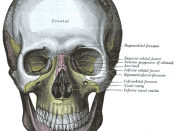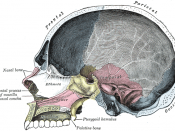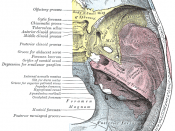From the past few decades to this day, one of the most controversial and heavily researched topics in the scientific and paleontological fields is the evolution of human beings. New excavations and reconstructions constantly bring new evidence to reshape the human ancestral tree. Today, it is widely accepted that humans share a common ancestor with the primates and that we have evolved from some primate closely related to our modern day primates. Scientists, with today's technology, are able to reconstruct complete skulls of ancient hominids from just fragments of the original skull - like a piece of a mandible, for example. In this lab it was out job to analyze these models and create out own evolutionary tree based on our findings.
The following is my analysis of the 11 specimen we were presented with. I have organized them by genus and in each genus by evolutionary chronology - the first evolved first and the most evolved last.
Igium Magnus (Large Ridge)
The species in this genus are characterized by the sagittal crest that runs along the midline of their frontal and parietal bones. This genus is the ancestor for the modern day orangutan, which is also displays the crest, protruding maxilla, and exaggerated eyes.
Skull #61 was found in Kenya and is dated 2.5 million years ago. The black coloration is due to high manganese content, I assume, in the stratum it was excavated from. The skull shows a prominent sagittal crest running from the parietal bone back (white). It is characterized by its widely flaring zygomatic processes (red) and its high degree of prognathism (green). The orientation of the skull, mainly the angle of the face to the cranial cavity, along with the placement of the foramen magnum towards the occipital, rather than more centralized, suggest that this...



Human Evolution
Great work, this is an incredibly scientific essay. You have shown great understanding and knowledge in this particular topic. Its well written and structured. Great essay for human evolution- well done.
4 out of 4 people found this comment useful.